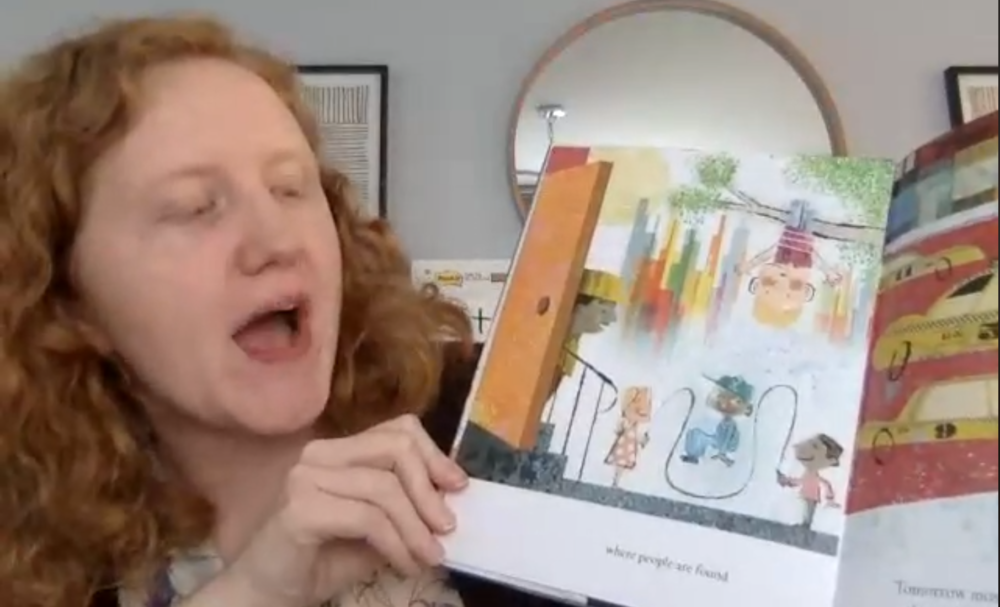
When Southwest Branch Children’s Librarian Amanda Hua greets Seattle children for Story Time now, she does so from her living room. Or her kitchen.
She still says hello to Cora, Owen, Ward, and Sylvie, but it’s via video feed.
Those are perhaps the biggest and only differences between Story Time now and Story Time a couple months ago. But otherwise, “Miss Amanda” maintains familiarity for Seattle’s little readers with Virtual Story Time, complete with the “hello song” she sings in the beginning and Frankie the Letter-Eating Monster with the letter of the day.
The Seattle Public Library now offers six Virtual Story Times per week, broadcast live on Facebook, but also retrievable on SPL’s Facebook page if families can’t make the events live.
“Families are craving normalcy and familiarity, as well as early literacy learning,” Hua says. “Providing Virtual Story Time is a great way to connect families with their neighborhood librarians. I know I’ve been happy to see my Virtual Story Times reaching my regular patrons.”
And the Virtual Story Times reach more people than can be packed into an in-person Story Time – video views reach up to nearly 3,000 plays at a time.
The Story Times are still specialized, with Toddler Story Time, Preschool Story Time, and Baby Story Time, among others. The dates and times are posted on The Seattle Public Library’s website.
“This is a very challenging time for parents and caregivers as they are expected to be full-time parents, full-time employees, and also part-time educators,” says Josie Watanabe, managing librarian for Youth and Family Learning Services. “We hope our Story Times entertain children, but most importantly give parents and caregivers tips and support for helping their children continue to grow their literacy skills at home.”
It’s a little different to emote to a camera instead of to a group of children, Hua says. She can’t see the kids’ funny faces, or read the energy in her audience. But she can still interact with the children’s caregivers, who type the kids’ reactions into the video’s chat function on their behalf.
Grown-ups write greetings from Lucy and Jack. They communicate the kids’ guesses on where the felt mouse is hiding on a felt board. And Hua is sure to read the children’s input when she sings the closing “May There Always Be” song. “What should there always be?” she asks her audience.
The answers pour in. Cuddles. Star Wars. Chocolate. Unicorns. Hua incorporates them into the song.
This way, she says, she still maintains that connection with the audience, even from afar.
“Thank you so much!” one caregiver wrote. “Our 14-month-old loved it! May there always be online story time!”
For more on Virtual Story Time – and for event listings on virtual Play and Learn meetups – visit www.spl.org/storytime. Look for more digital early learning experiences as SPL continues to develop content.
